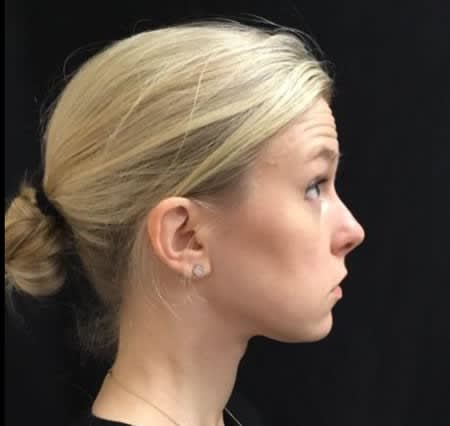
The Skinny
Overview
Botox® is a derivative of botulinum toxin type A, which is a neurotoxin that comes from clostridium botulinum, an anaerobic bacterium, and is capable of being used for both cosmetic and medical reasons. It is an injectable, and therefore, if it requires anesthesia at all, it only requires a topical one. It has been approved by the Food and Drug Administration (FDA) as a safe treatment for health-related concerns but is still awaiting approval for cosmetic purposes as it is a newer treatment. Many people who have already used it have found it to be very successful in treating their cosmetic concerns.
Unfortunately, Botox® treatments still do not have the best reputation as popular culture tends to exaggerate or misrepresent the reality of Botox usage. There is an ever-increasing trend to look more and more youthful as we age, meaning that the topic of skin maintenance begins even earlier than it has in the past. This is both good and bad. On the one hand, it makes us more aware of the need to care for our skin and practice preventative measures of aging from an earlier age. On the other hand, it makes us less cautious about taking the time to select highly trained and skilled injectors. This causes preventable mishaps. In the hands of a skilled injector, you will find greater success and more realistic results following a Botox® treatment.
Once you have selected an experienced Botox® injector, there are before and after care standards, you should follow to help ensure the best possible results. Your provider will give you the most thorough list to follow depending on your procedure type, but there are general guidelines that are helpful to know beforehand.
Do not consume alcoholic beverages for at least 24 hours before your Botox® appointment. Alcohol may thin the blood, increasing your risk for bruising. Avoid nonsteroidal anti-inflammatory(NSAIDS)and blood-thinning medications for 2 weeks before your Botox® injections for the same reason. The following medications and supplements have a blood-thinning effect and should be avoided to reduce your risk of bruising and swelling: Aspirin®, Vitamin E, Ginkgo Biloba, Ginseng, St. John’s Wort, Omega 3/Fish Oil supplements, Ibuprofen/Motrin®/Advil®, Alev®e, and other NSAIDS. You will also need to notify your provider if you are prone to cold sores as they may want to prescribe an anti-viral medication before treatment to ward off any flare-ups.
After your Botox® treatment, it is helpful to apply a cold compress for 20 minutes each hour, and take Tylenol® for comfort, if needed. Heavy or vigorous types of physical activity will need to be avoided for at least 6 hours, although light activities can be resumed right away. You should also expect to see some redness, swelling, bruising, dryness and flakiness associated with your treatments. These should clear up quickly, but don’t be alarmed if they do not go away immediately as each unique skin type reacts a little differently to the same treatment.
Botox® injections are very shallow, meaning that the medicine is injected just below the surface of the skin and into the target muscle, where it remains. The results of Botox® will not be noticeable right away. It can take up to 3 days before you notice the maximum effects of your Botox® injections. The effects of Botox® last on average 4 months with a range of 3-6 months. Maintenance treatments are therefore required to maintain the look and appearance achieved from your injections. Maintenance schedules will vary depending on your specific reasons for needing Botox® treatments.
AEDIT
Before & After Images by Provider












Before & After Images by Provider
Botox Solutions
The Specifics
Cost Overview
Botox® is a temporary remedy for both the cosmetic and medical concerns you may have, however, it is a cost-effective option ranging anywhere from $100 per treatment to $1,500 per treatment. While highly effective on its own, many people combine Botox® with other treatments such as facelifts, brow lifts or other plastic surgeries to reap the most cosmetic benefit available. To better understand the price of treatment, check out our complete guide to Botox® cost.
Recovery Overview
Minimal recovery time and fast results are two of Botox’s most alluring features. Recovery time will vary depending on the treatment type you receive, however, recovery time typically does not extend beyond a few days regardless of the procedure type. Botox® facials require no downtime and physical activity can be resumed immediately. Some of the other types of Botox® injections, such as in calf reduction, allow light physical activity immediately following injection and 24 to 48 hours before full physical activity can be resumed.
To better understand the healing and downtime associated with the procedure, check out our complete guide to Botox recovery.
Ideal Candidates
Botox® is ideal for those who may not be ready to undergo permanent, surgical treatment options, but who have retained better skin quality and less tissue laxity. It is for those seeking a quick, temporary and cost-effective method of addressing the following concerns:
Botox cannot change bone structure, should not be used for persons under 18, and is not for those who are pregnant or nursing. It is also not for those with medical conditions affecting the muscles or for those with known allergic reactions to Botox ingredients. You may want to check with your provider for a medication guide of the Botox options.
Side Effects, Risks, and Complications
In general, Botox® treatments are well-tolerated, but there are a few things to be aware of before your treatment. It is common to experience redness (erythema) and dryness, including the related shedding of skin. You may also experience an allergic reaction, swelling, bruising or infection of the injection site or feel warm, tight or itchy. It is also normal to feel dizzy, have general muscle weakness or experience vision problems. These issues usually clear up within 12-48 hours.
Other, less common issues, such as double vision, muscle weakness, muscle spasms, hoarse voice, and difficulty speaking or trouble breathing may be experienced as well and may last between 3-4 months.
Botox Procedure Types
Botox Facial The goal of a Botox® cosmetic facial is to deliver nutrients to the skin that create a rejuvenated appearance by giving you tighter, younger looking skin.
A Botox® facial uses a technique called microneedling, a cosmetic procedure in which the skin is repeatedly punctured with tiny, sterile needles, to inject a combination of Botox® and a customized serum underneath the skin. This concoction reaches into the skin, infusing it without freezing the underlying muscle.
After the surface of your skin has been thoroughly cleansed by a healthcare professional, your technician will apply a topical anesthetic and will begin the microneedling process. The microneedling device is often a rolling or pen-like system with a needle approximately 0.1-0.25 in diameter. Some microneedling devices have an internal system that delivers the Botox® into the skin as it goes across the skin while others require the practitioner to spread the serum over the skin before performing microneedling. Your surgeon will then simultaneously use their non-dominant hand to smooth and stabilize the skin while their dominant hand treats the targeted areas. This process lasts approximately 20-45 minutes.
Botox for Dimpled Chin The goal of Botox® for a dimpled chin is to relax the mentalis (chin) muscle and reduce the appearance of wrinkling in the chin area.
Sometimes a person’s chin can develop peau d’orange, which refers to an excessively dimpled, pebbly or orange peel look of the skin that worsens when the chin muscle contracts. Botox can help alleviate this condition.
Before injection, your targeted areas will be cleansed and a marker will be used to pinpoint the location of the injection sites. You will remain seated in an inclined position for this treatment. Once the muscles have been injected, light pressure is applied to the area to prevent bruising, and the marks made by the marker are wiped off.
Botox for Hyperhidrosis The goal of Botox® injections for hyperhidrosis is to decrease or eliminate excessive sweating in the underarms.
Botox® for hyperhidrosis refers to using the injections as a means of helping alleviate over productive sweat glands. Botox® is a natural, purified protein derived from clostridium botulinum, an anaerobic bacterium that can temporarily block the chemical responsible for "turning on" the body's sweat glands. Typically, 50-100 units of Botox are injected in the armpit region, however, the FDA recommends that the cumulative dose not exceed 360 units in 3 months.
This procedure is performed by a surgeon who will use either a starch-iodine test or the hair-bearing area to determine and mark the location of the sweat glands. This generally requires 40 evenly-distributed injection sites that are placed underneath the skin in each axilla. The injection sites are placed approximately 8 mm apart where the syringe is slowly depressed to deposit approximately 0.05 mL of the solution.
Chemical Brow Lift The goal of a chemical brow lift is to soften wrinkles and forehead furrows by selectively denervating muscles that control facial movement and may utilize either Dysport® or Botox® for treatment.
Like a Botox® facial, a chemical brow lift utilizes neuromodulators (botulinum toxin product injections) to reduce wrinkles and elevate, reshape, and improve the brow contour. Neuromodulators are meant to relax wrinkles by selectively denervating opposing muscles that maintain brow height and position. This keeps the muscle from contracting which relaxes and softens wrinkles.
The technique that your surgeon will use for your brow shaping depends on your desired effect. The general process for elevating the brow is to identify the optimal point for elevation by visually watching the patient and by feeling for the point of maximum contraction while you frown aggressively.
Muscle Paralysis Rhinoplasty The goal of muscle paralysis rhinoplasty is to smooth out facial wrinkles to create the illusion of a smaller, younger nose.
Muscle paralysis rhinoplasty focuses on the use of Botox® to help relax facial muscles. This decreases wrinkles and lines around your nose, such as bunny lines, allowing lights and shadows to affect its shape. This changes the perception of the nose by making a larger nose appear temporarily smaller.
During a muscle paralysis rhinoplasty, your provider will mark and disinfect the injection sites. A topical numbing gel may be used for comfort as well. A narrow-gauge microneedle will then be used to inject Botox® in areas such as between the brows, on the forehead or around the outer eye area. You typically need 1-3 injections to see results in your wrinkle-forming muscles.
Calf Reduction by Botox Injections The goal of a calf reduction by Botox® injection is to slim and contour the calf.
For those with larger calves, Botox® injections could help temporarily reduce their size by using controlled atrophy to create a smoother contour in the calves.
Your provider will use a series of syringes to inject Botox® evenly across the gastrocnemius muscle, which is the muscle responsible for bulkiness and definition in the calf. This procedure is often completed in under an hour.
Jawline Slimming with Botox The goal of jawline slimming is to reduce a prominent, disproportionate, or asymmetric jawline.
Sometimes people experience a prominent, disproportionate, or asymmetric jawline caused by muscles that have been enlarged by clenching teeth while sleeping. Botox® works by reducing the size of the muscles and smoothing the facial contour at the site of injection.
After approximately 15-50 units of Botox® injections on each side of the face into the masseter (jaw) muscle, Botox® can help alleviate this condition.
The Takeaway
Choosing a Provider
It is always in your best interest to find a board-certified surgeon. Use the following sites to assist you in your search:

